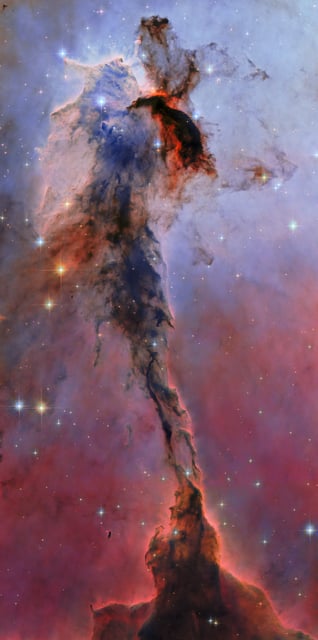Overview
- The reprocessed image depicts a 9.5-light-year-long pillar in the Eagle Nebula, composed of cold hydrogen gas and dust essential for star formation.
- The Eagle Nebula, also known as Messier 16, is located 7,000 light-years away in the Serpens constellation.
- New image-processing techniques applied to the 2005 Hubble data enhance the visual detail and scientific insights of the cosmic structure.
- The color mapping highlights key components: blue for ionized oxygen, red for hydrogen emissions, and orange for starlight penetrating dust.
- This release is part of Hubble's 35th-anniversary celebrations, underscoring its enduring legacy in advancing astronomical discovery.
